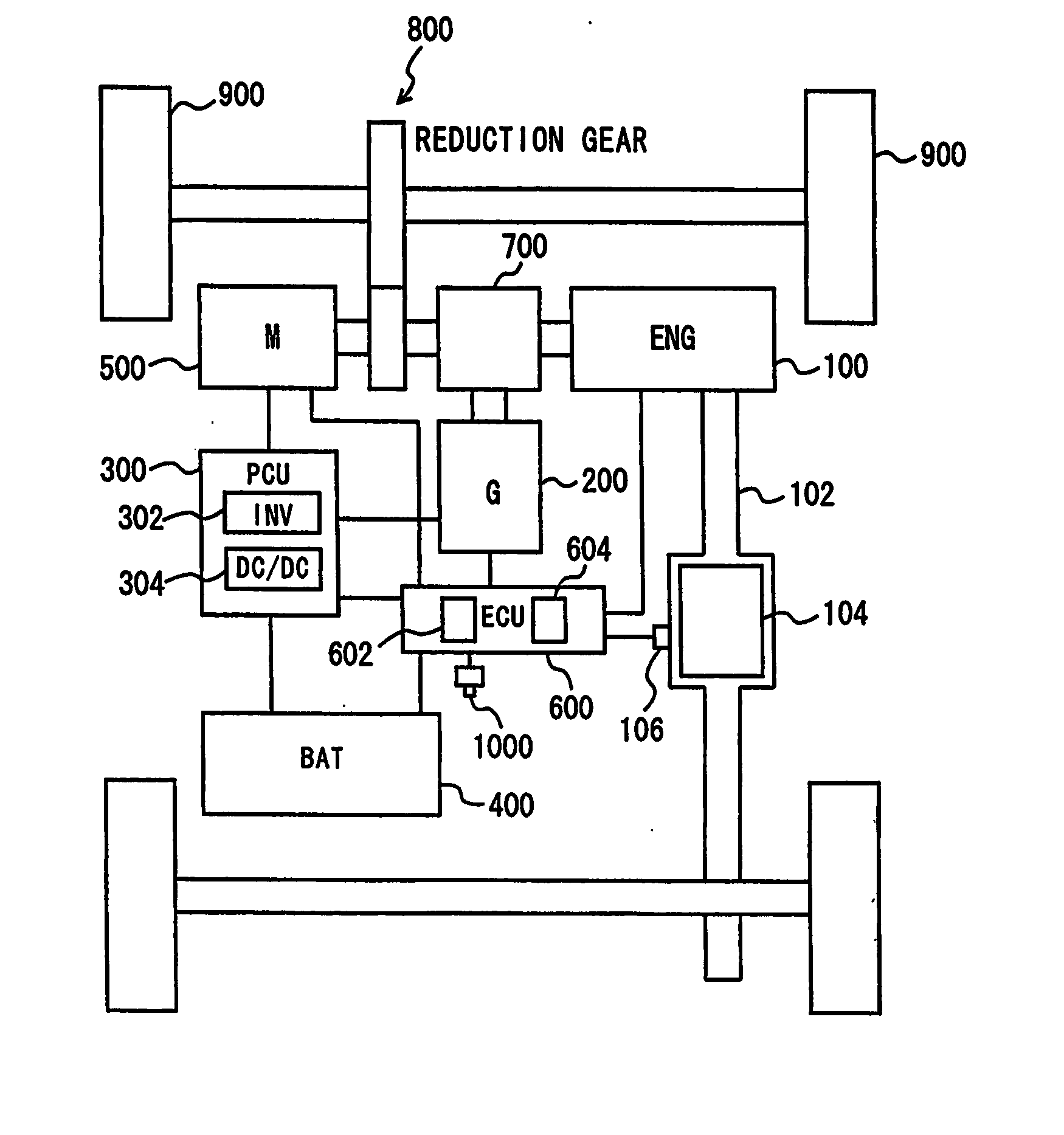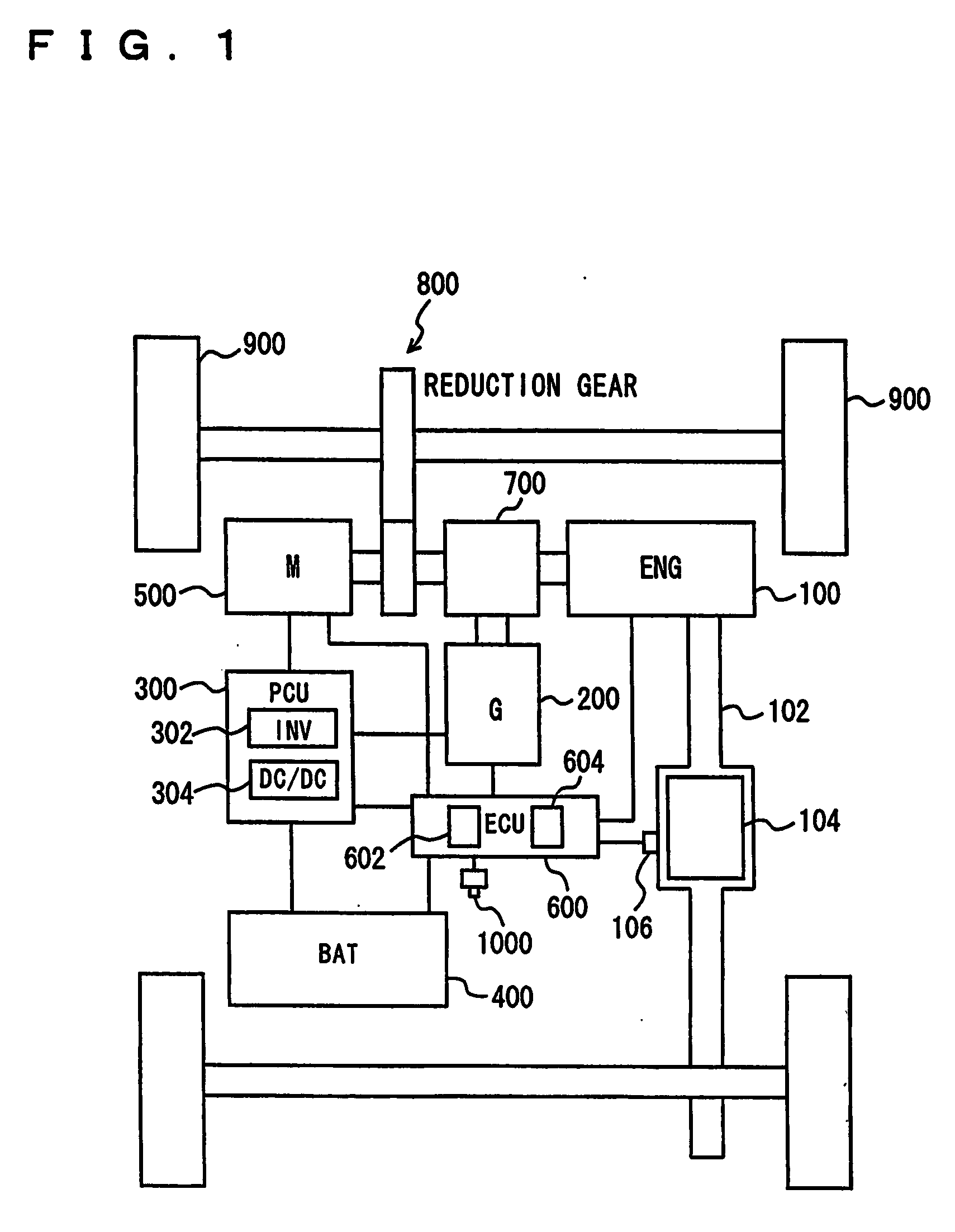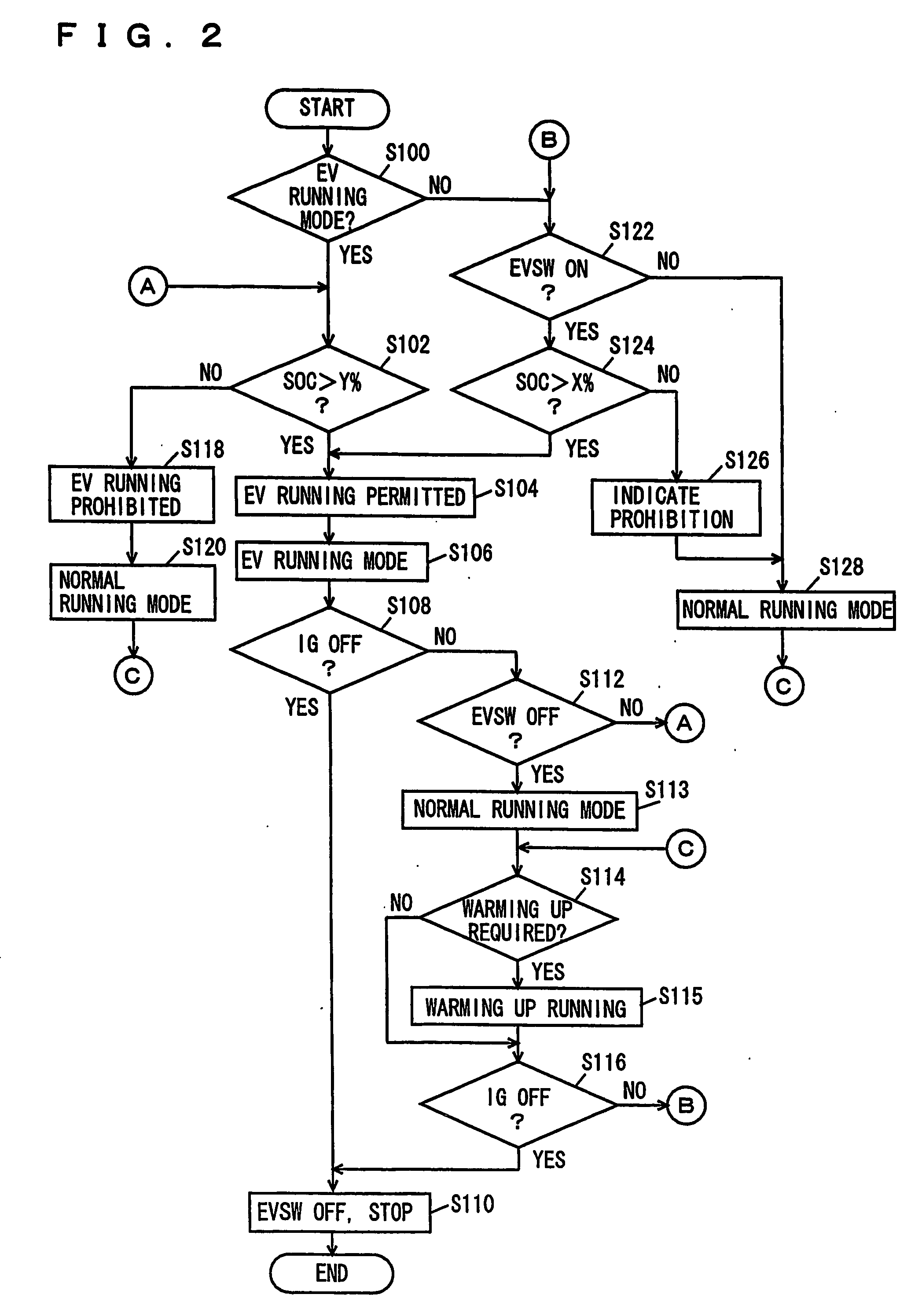[0015] Another object of the present invention is to provide a control apparatus and a control method of a vehicle that allows a driver to recognize the state of a vehicle.
[0017] According to the present invention, the first
control unit runs the vehicle by the
electric motor supplied with power from the charging mechanism in accordance with an operation of a driver (an EV running mode). Additionally, the second
control unit runs the vehicle by the
electric motor supplied with
electric power from the charging mechanism, when it is determined that the catalyst requires to be warmed up (a warming-up running). Here, based on the predetermined condition as to whether execution of control by the second
control unit (the warming-up running) is possible or not, control by the first control unit (the EV running mode) is prohibited. Thus, even when there is a request from the driver, control by the first control unit (the EV running mode) may be prohibited such that control by the second control unit (the warming-up running) can be executed. This prevents electric power stored in the charging mechanism from being consumed by control by the first control unit (the EV running mode) and hence prevents the remaining amount of the charging mechanism from becoming smaller than the remaining amount necessary for executing control by the second control unit (the warming-up running). Thus, control by the second control unit (the warming-up running) is ensured. Accordingly, in case of a
hybrid vehicle equipped with an engine, an electric motor, and a charging mechanism, for example, the output of the engine is less consumed for running the vehicle during warming-up of the catalyst. Therefore, during the warming-up of the catalyst, the amount of gases (exhaust gases) produced by engine operation can be suppressed. Additionally, in case of a fuel
cell vehicle equipped with a fuel cell, a reformer, and a catalyst purifying gases (specifically, CO) produced when taking
hydrogen out by the reformer, for example, the electric power generated by the fuel cell is less consumed for running the vehicle during warming-up of the catalyst. Thus, the power generation amount of the fuel cell and the amount of
hydrogen taken out by the reformer can be suppressed. Therefore, the amount of gases (specifically, CO) produced when taking
hydrogen out can be suppressed. As a result, in either case, the control apparatus of a vehicle can be provided, in which gas emission in an amount exceeding the purifying capability of the warming-up catalyst is prevented.
[0025] According to the present invention, the vehicle runs by the electric motor supplied with electric power from the charging mechanism according to the operation of the driver (an EV running mode). The vehicle runs by the electric motor supplied with electric power from the charging mechanism, when it is determined that the catalyst requires to be warmed up (a warming-up running). Here, based on the predetermined condition as to whether execution of control by the step of running the vehicle when it is determined that the catalyst requires to be warmed up (the warming-up running) is possible or not, control by the step of running the vehicle in accordance with an operation of a driver (the EV running mode) is prohibited. Thus, even when there is a request from the driver, control by the step of running the vehicle in accordance with an operation of a driver (the EV running mode) may be prohibited such that control by the step of running the vehicle when it is determined that the catalyst requires to be warmed up (the warming-up running) can be executed. This prevents electric power stored in the charging mechanism from being consumed by control by the step of running the vehicle in accordance with an operation of a driver (the EV running mode) and hence it prevents the remaining amount of the charging mechanism from becoming smaller than the remaining amount necessary for executing control by the step of running the vehicle when it is determined that the catalyst requires to be warmed up (the warming-up running). Thus, control by the step of running the vehicle when it is determined that the catalyst requires to be warmed up (the warming-up running) is ensured. Accordingly, in case of a
hybrid vehicle equipped with an engine, an electric motor, and a charging mechanism, for example, the output of the engine is less consumed for running the vehicle during
warming up of the catalyst. Therefore, during warming up of the catalyst, the amount of gases (exhaust gases) produced by engine operation can be suppressed. Additionally, in case of a fuel cell vehicle equipped with a fuel cell, a reformer, and a catalyst purifying gases (specifically, CO) produced when taking hydrogen out by the reformer, for example, the electric power generated by the fuel cell is less consumed for running the vehicle during warming up of the catalyst. Thus, the amount of electric power generated by the fuel cell and the amount of hydrogen taken out by the reformer can be suppressed. Therefore, the amount of gases (specifically, CO) produced when taking hydrogen out can be suppressed. As a result, in either case, the control method of a vehicle can be provided, in which gas emission in an amount exceeding the purifying capability of the warming-up catalyst is prevented.
 Login to View More
Login to View More  Login to View More
Login to View More 


